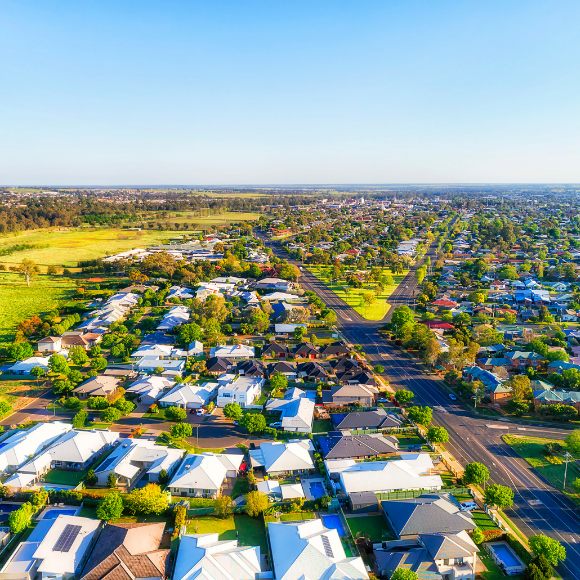
Despite January being traditionally a quiet month for the property market, new figures show that homes were sold and prices continued to rise.
CoreLogic’s national measure of housing values rose 1.1% in January, a rise of 10 basis points from the December result. This means that the typical Australian home is now worth $131,236 more than it was a year ago.
Five of the eight capital cities recorded a modest uptick in the monthly rate of growth, including Melbourne which had posted a slight decline in the previous month.
Over the quarter, however, the rate of growth continued to soften, reflecting the longer-term trend of easing back across most regions of Australia.
CoreLogic Research Director Tim Lawless remarked that housing stock is thinly traded during January and it will be important to monitor the trend as transactional activity picks up.
“As the volume of home sales moves out of seasonal lows, we should get a firmer reading on how 2022 is shaping up”, Lawless said.
“The early indication is that housing markets are starting 2022 with a similar trend to what we saw through late last year. Values are still rising, but nowhere near as fast as they were in early 2021.”
The annual change in national housing values reached a new cyclical high in January, with Australian dwellings up 22.4% over the year. This was the highest annual rate of growth since June 1989.
In approximate terms, the typical Australian home is now worth $131,236 more than it was a year ago. Brisbane has recorded the highest annual growth rate across the capital cities, with housing values up 29.2% (approx. $159,763).
Continuing a pattern seen over recent months, the January results showed greater diversity, with Brisbane (2.3%) and Adelaide (2.2%) leading the pace of gains ahead of Hobart (1.2%) while growth in Melbourne (0.2%), Darwin (0.5%), Sydney and Perth (both 0.6%) recorded substantially softer outcomes.
Regional markets have again shown a stronger result for housing values, with the combined index up 1.8% over the month and 6.3% over the rolling quarter. This compares with a 0.8% and 2.6% rise respectively across the combined capital cities over the same periods.
Houses are still recording a higher rate of growth than units. Nationally house values were up 1.3% in January compared with a 0.3% rise in unit values; a trend that has been apparent throughout the pandemic.
Three of the eight capital cities are now recording a median house value over the $1 million dollar mark. Melbourne’s median house value surpassed $1 million for the first time in January, while it was the second month in a row Canberra’s median house value passed $1million.
In Sydney, the median house value climbed to just under $1.39 million. The difference between the national median house and unit value reached a new record high of 28.3% in January. This may see demand gradually deflect towards the more affordable medium-to-high density sector of the market.
A multi-speed dynamic has emerged across the capital cities. Brisbane and Adelaide stand out amongst the capital cities, with housing values continuing to rise at more than 2% each month while growth conditions across the remaining capital cities has slowed.
The slowing trend in Sydney and Melbourne can at least partially be explained by a larger deposit hurdle caused by higher housing prices alongside low income growth, along with higher advertised inventory levels and weaker demographic trends.
Slower conditions across Perth’s housing market may be more attributable to the disruption to interstate migration. In Brisbane and Adelaide, housing affordability is less challenging, advertised stock levels remain remarkably low and demographic trends continue to support housing demand, especially across South East Queensland.
The trend in new listings is higher relative to the same period last year, but freshly-advertised supply remains below average nationally. A count of newly advertised listings over the four weeks to 30 January shows the trend in fresh stock was 5.7% higher than a year ago but still 7.1% below the previous five-year average.
With newly advertised stock additions generally low, total inventory levels remain in short supply. Nationally, total advertised supply levels were 20.0% lower than a year ago and 36.9% below the previous five-year average.
“The trends in advertised supply levels go a long way towards explaining the performance of housing values”, Lawless said.
“Melbourne and Sydney have seen inventory levels normalise over recent months, taking some urgency out of the market as supply and demand become more evenly balanced. The situation in Adelaide and Brisbane is very different; supply remains tight and buyer competition is a key factor supporting the upwards pressure on prices.”
Although January is typically the quietest month for home sales, activity across Australia was estimated to be 15.1% higher than January last year and 39.4% above the previous five-year average.
Demonstrating the strength of demand across regional Australia, the January estimate of home sales was 57.9% above the previous five-year average compared to the capital cities, where the sales activity was estimated to be 26.6% higher than average.

